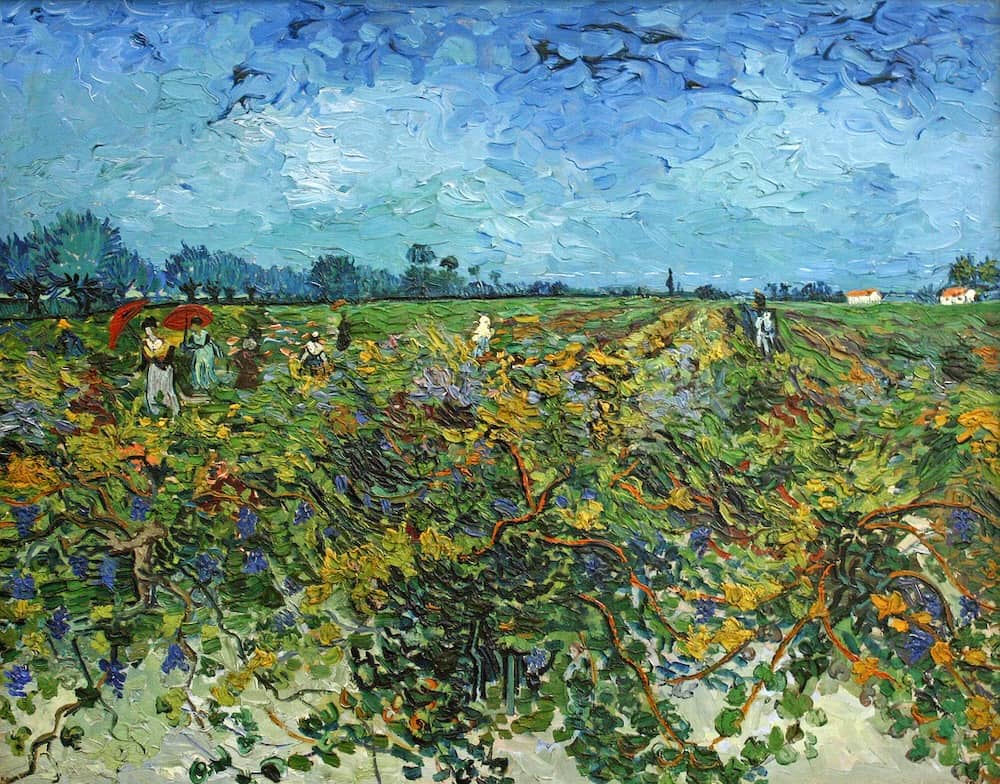The Green Vineyard, 1888 by Vincent van Gogh

While working on paintings for his next consignment to Theo, Van Gogh wrote that he was trying to ensure 'that the new series is better than the first two consignments. And among the studies there will be some which I hope are real paintings'. As in the case of the previous catalog entry, this canvas - completed in early October - may be classed as a true tableau.' We see here a field near Montmajour with peasants going about their work, while to one side a group of ladies, tempted outdoors by the lovely autumn weather, are taking a stroll. Despite the workers and the cart in the field, the harvest would not appear to be in full swing. The abundant bunches of grapes are clearly visible in the foreground above the grey sandy track promise a rich harvest - something on which the artist apparently wanted to focus our attention. 'You should see the vines!' Van Gogh wrote delightedly to his brother in early October. 'There are bunches weighing at least a kilogram, the grapes are magnificent this year'. In fact he initially referred to the canvas simply as les pampres (Vines).
Van Gogh regarded the canvas as a pendant to the Poet's Garden, which the painter had completed in the same high relief style. Another pendant later took the place of this painting which has since been lost: the stylistically comparable Red Vineyard, which is now in Moscow. As a colourist Van Gogh liked to see a link between paintings with contrasting colours, and The Red Vineyard, completed in early November, is complementary to the Otterlo canvas which is predominantly green. From the time that The Red Vineyard was made, Van Gogh almost always mentioned the two works together. The canvases probably symbolize autumn, the season traditionally depicted by the motif of the grape harvest.




















